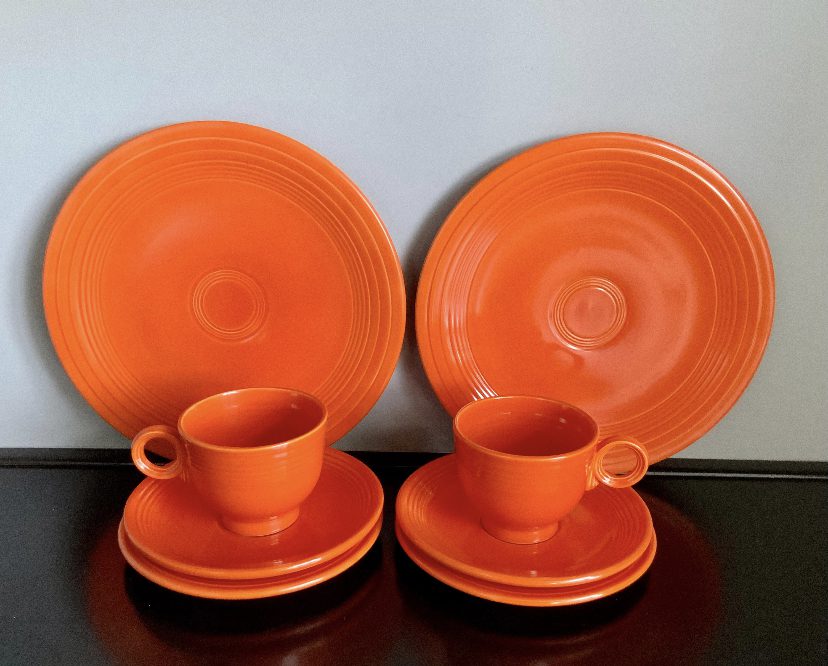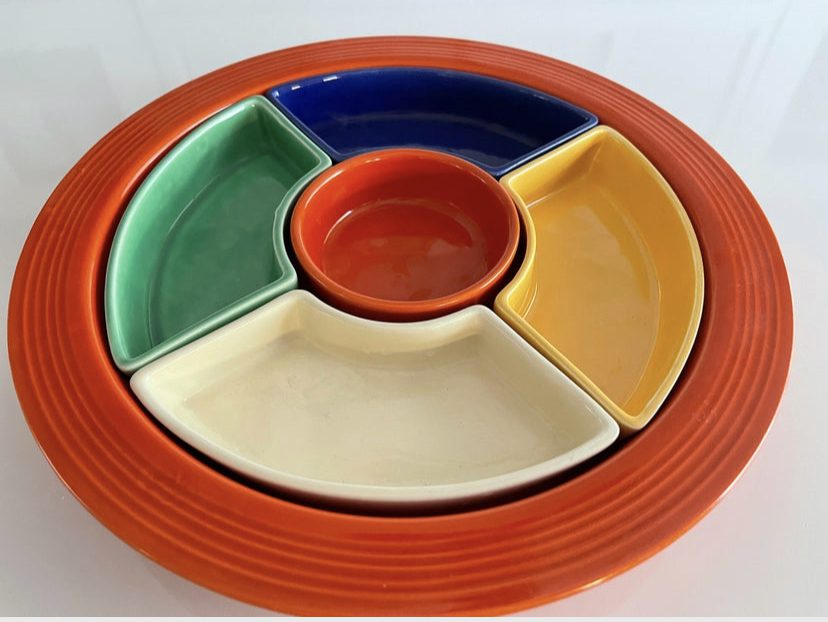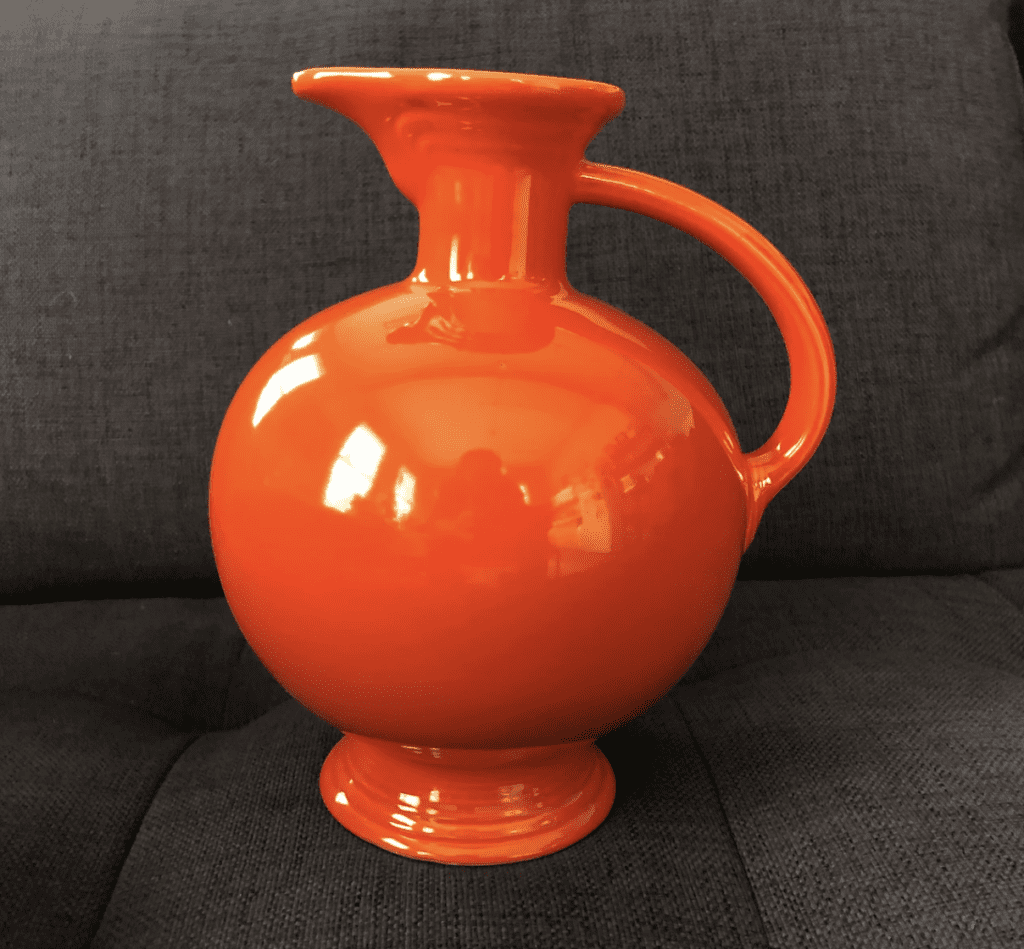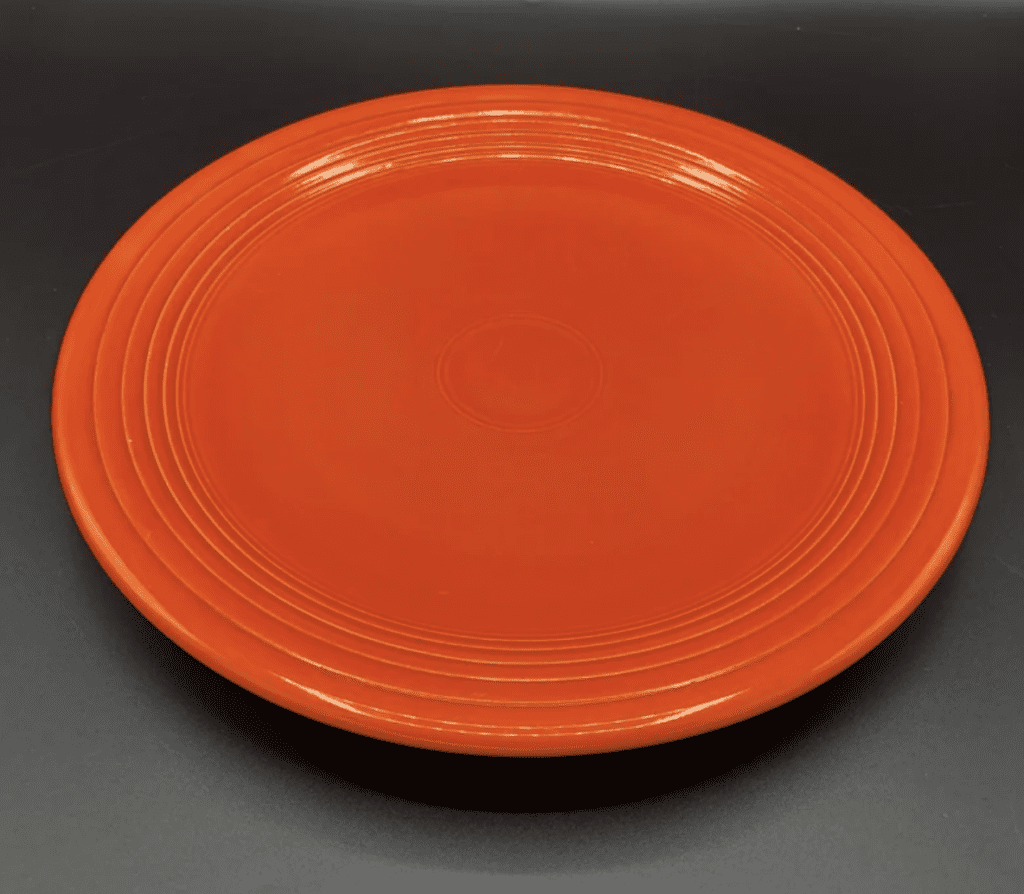
Fiestaware is a brand of dishware that hit the stores in 1936, immediately catching the attention of households around the nation due to its cheap prices and bright colors. However, there have been concerns regarding the materials used to give these dishes their unmistakable colors. The nickname for the Fiesta red dishes is “atomic red” or “radioactive red”, hinting at the history of uranium usage in the dishes in the company’s early days.
It is safe to assume that all Fiestaware dishes produced between 1936-1972 contain relatively high amounts of uranium, making them radioactive. Although there are radioactive materials present in all of the dishes, the highest amounts are found in the ivory and red-colored dishes made before 1950.
As menacing as this sounds, there have been no severe illnesses or diseases linked to Fiestaware dishes, even given the high amount of uranium they contain. Many prominent groups and organizations have tested the plates and given recommendations on how to stay safe around vintage Fiestaware products, and these suggestions and studies will be referenced throughout the remainder of this article.

History of Uranium in Fiestaware
Introduced in the depression era, the low prices and vibrant colors were no accident but rather a clever marketing scheme by Homer Laughlin China Company. The company’s tagline, “An American Icon”, holds true today as these dishes are in high demand by antique hunters all over the nation. Even after the discovery of high radiation levels in the dishes, they are still in high demand.
The ceramic glaze that was used on the dishes contained high amounts of uranium during these years, making the dishes radioactive and unsafe to eat off of. The Oak Ridge Associated Universities Museum of Radiation and Radioactivity ran tests on the dishes and have determined that uranium could have made up to 14% of the ceramic glaze that coats these dishes.
Although this may seem surprising, Fiestaware was not the only company to use uranium as an ingredient. Since radium was a relatively new discovery (1898) and the adverse health effects were not yet known, many companies in the 1900’s used uranium or radium in ceramics, watches, alarm clocks, and glass. Scientists eventually realized that these minerals were harmful and their use in day-to-day products was discontinued.

Safe Uranium Levels
Uranium is a natural substance that can be found as a mineral in rocks, dirt, air, and water. As a natural mineral, it can get into drinking water through soil or rocks and contaminate the supply. Because of this, there is a small amount of contamination from uranium allowed in drinking water within the US. Although the ideal amount of uranium in your water is 0mg/L, the World Health Organization has stated that there can be as much as 0.30mg/L of uranium without adverse health effects.
Compared to the safe amount from the water example above, it is even more shocking to learn that there are as many as 4.5 grams of uranium in/on each Fiestaware plate. Interestingly enough, the US government ended up confiscating the company’s uranium supply somewhat early on so they could use the materials in the production of the atomic bomb, causing the disappearance of the bright “radioactive” red color. The company resumed using uranium in 1959.
Uranium can lead to kidney issues or even complete kidney failure, as well as a change in urine composition. Uranium also has the potential to decay into other radioactive substances, such as radium. In this case, prolonged exposure can lead to cancer or other major health issues.

Understanding Different Kinds of Radiation
Simply saying that one was exposed to radiation is a general statement that is difficult to understand. There are three main kinds that are useful in understanding uranium levels in Fiestaware dishes. These include alpha, beta, and gamma rays.
Alpha rays are the least harmful, as these are the rays that naturally occur in air and dirt. These rays are not strong enough to penetrate the human skin, and they cause little to no damage if they get into the body. Uranium as a mineral would fall under this category.
Beta rays are also common in the world around us and although they are stronger, they can cause less damage to your body if ingested. However, they can cause burns and are capable of entering the human skin.
Gamma rays are the most powerful kind of radiation since they are pure energy. These rays can pass through the entire human body and can cause harm on both the outside and inside of the body. Gamma rays can pass through several layers of lead and even through several feet of concrete, easily making them the most dangerous.

Staying Safe Around Your Fiestaware
Armed with the knowledge of different kinds of radiation, it will be easier to understand the different levels of radiation in Fiestaware. Testing by experts has revealed that you can be exposed to radiation from your Fiestaware dishes simply by having them close to you and although you won’t get a harmful amount of radiation into your body, you can still be exposed up to 10 feet away from them.
Acidic foods such as tomato sauce can cause the uranium to leach out of the plate and into your food, making it harmful to ingest. Eating off of a cracked Fiestaware plate can expose you to gamma rays and has the potential to cause serious health effects. Standing in the same room as one of these dishes can expose you to alpha rays, and standing within three feet of them can expose you to beta rays.
To reiterate what was said earlier, there have been no reported instances involving Fiestaware and radiation poisoning and clearly, the threat is not big enough to deter the thousands of people who enjoy collecting these antiques.
As with all things, it is just important to use your discretion and take any health warnings seriously. In the case of Fiestaware, you should be just fine as long as you don’t eat off of the older dishes (1936-1972).

